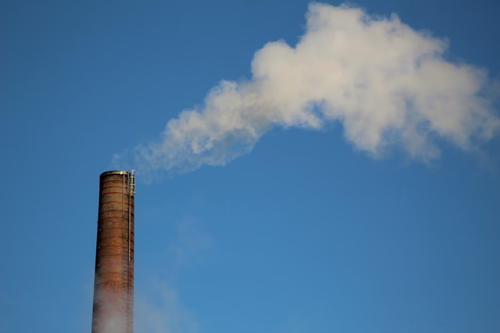WEDNESDAY, MAY 8, 2024
Earlier this week, the U.S. Environmental Protection Agency issued a final rule to expand and update methane emissions reporting requirements for petroleum and natural gas systems under the Greenhouse Gas Reporting Program.
The EPA states that the final revisions could help promote greater transparency for methane pollution from oil and natural gas facilities by improving the accuracy of yearly emissions reporting.
Rule Proposal
The EPA first announced new reporting rules for emissions in July 2023, issuing a proposal to amend the reporting requirements for petroleum and natural gas systems under the agency’s GHGRP.
According to the release, the proposed revisions were to improve the accuracy of reported GHG emissions such as methane and are consistent with the Methane Emissions Reduction Program under the Inflation Reduction Act.
The proposed amendments were reportedly meant for subpart W of the program, which consists of emissions sources in 10 segments of the petroleum and natural gas industry.
According to the release, the GHGRP requires the reporting of GHG data and other relevant information from large GHG emissions sources, fuel and industrial gas suppliers, as well as carbon dioxide injection sites in the United States.

 |
| Anne Nygard / Unsplash |
|
Earlier this week, the U.S. Environmental Protection Agency issued a final rule to expand and update methane emissions reporting requirements for petroleum and natural gas systems under the Greenhouse Gas Reporting Program. |
Approximately 8,000 facilities are reportedly required to report their emissions annually, the data for which is then made available to the public in October of each year.
Under subpart W of the GHG program, facilities that contain petroleum and natural gas systems emit 25,000 metric tons or more of GHGs each year report GHG data to the EPA. Owners and operators reportedly collect GHG data; calculate GHG emissions; and follow specified procedures for quality assurance, missing data, recordkeeping and reporting.
Section 60113 of the Inflation Reduction Act amended the Clean Air Act and directed the EPA to impose and collect a charge on methane emissions to exceed certain waste emission thresholds.
The law reportedly requires the EPA to revise requirements for subpart W to ensure the reporting is based on empirical data, accurately reflects the total methane and waste emissions from applicable facilities and allow owners and operators to submit empirical emissions data to “demonstrate the extent to which a charge is owed.”
According to the EPA, these amendments would address gaps in total methane emissions reported by facilities through adding new covered sources such as “other large release vents,” that would capture “abnormal” methane emission events not usually accounted for when using existing methods.
Additionally, the EPA stated that the amendments would also:
The EPA has also reportedly announced determinations to establish whether submitted data under the proposed revisions would be entitled to confidential treatment.
According to the release, most revisions would be effective on Jan. 1, 2025, while reporters would implement the changes beginning with reports prepared for the 2025 reporting year and submitted by March 31, 2026.
About the Final Ruling
The new final rule reportedly updates the GHGRP and is a major component of the Inflation Reduction Act’s Methane Emissions Reduction Program, created by to help states, industries and communities utilize recently finalized Clean Air Act methane standards.
The administration also plans to deploy over $1 billion in financial and technical assistance to hasten the transition to no- and low-emitting oil and gas technologies.
“As we implement the historic climate programs under President Biden’s Inflation Reduction Act, EPA is applying the latest tools, cutting edge technology, and expertise to track and measure methane emissions from the oil and gas industry,” said EPA Administrator Michael S. Regan.
“Together, a combination of strong standards, good monitoring and reporting, and historic investments to cut methane pollution will ensure the U.S. leads in the global transition to a clean energy economy.”
Recent studies reportedly showed that actual emissions from petroleum and natural gas systems are larger than what has previously been reported to the GHGRP. As a response, the new rule clears the way for the use of satellite data to find super-emitters, as well as defining large emission events, requiring direct monitoring of key emission sources and updating the methods for calculation.
The standards also reportedly set up a Super-Emitter Program to detect large leaks and releases, while the new reporting rule will require owners and operators to find and report the emissions detected through that program to help close the gap between observed methane emissions and reported emissions.
The final subpart W rule is expected to improve the quality of emissions data reported from oil and natural gas operations, with provisions that may improve the quantification of methane emissions, incorporate advances in methane emissions measurement technology and simplify compliance with other EPA regulations.
The EPA is now reportedly also allowing for the use of advanced technologies like satellites to help quantify emissions in subpart W. Additionally, the agency plans to finalize new methodologies to allow for the use of empirical data to quantify emissions, including options added in response to public comments on the proposed rule.
The final rule will also reportedly allow for the earlier use of empirical data calculation methodologies for facilities that prefer to use them to quantify 2024 emissions.
All of this is expected to help improve clarity and expand options for owners and operators to submit empirical data to show their effort to reduce methane emissions and identify whether a Waste Emissions Charge is owed, based on thresholds set by Congress.
The agency plans to gather further information about advanced measurement technologies and inform potential regulatory changes or other standard setting programs that push the use of more accurate and comprehensive measurement strategies, including:
Tagged categories: Air pollution control; Air quality; Emissions; Environmental Controls; Environmental Protection; Environmental Protection Agency (EPA); EPA; Funding; Gas detectors; Government; Greenhouse gas; Health and safety; Oil and Gas; President Biden; Program/Project Management; Regulations; Safety